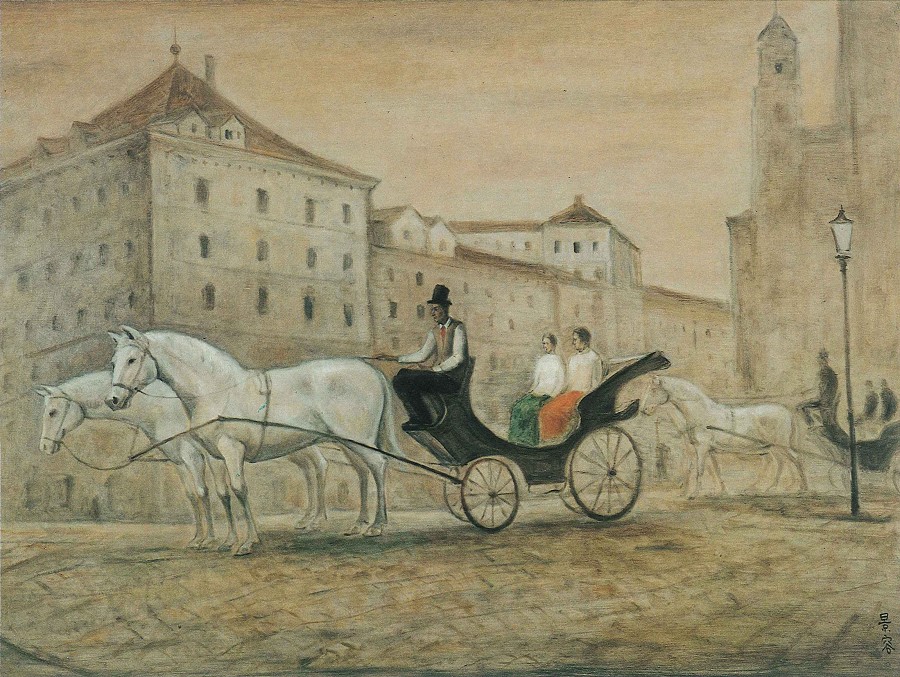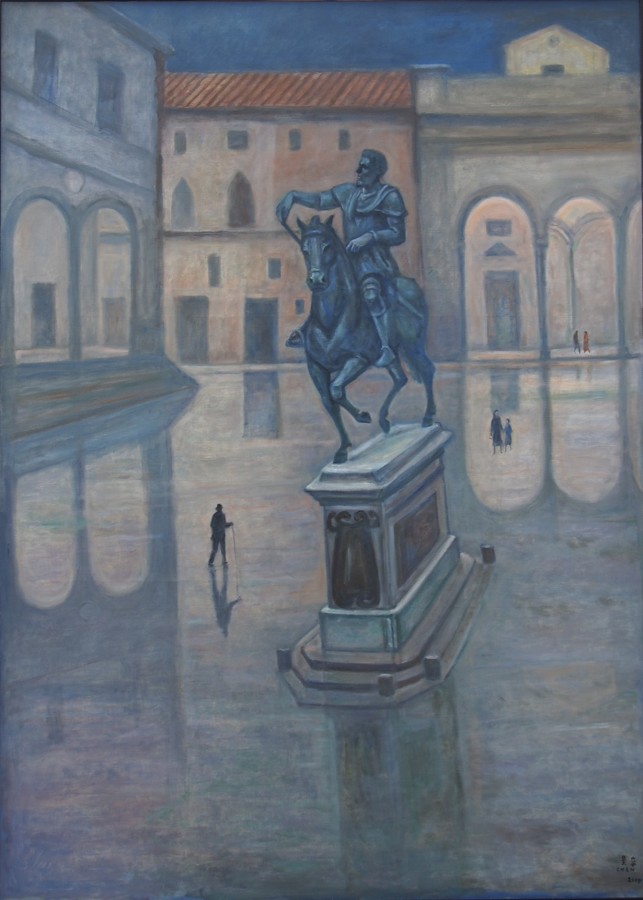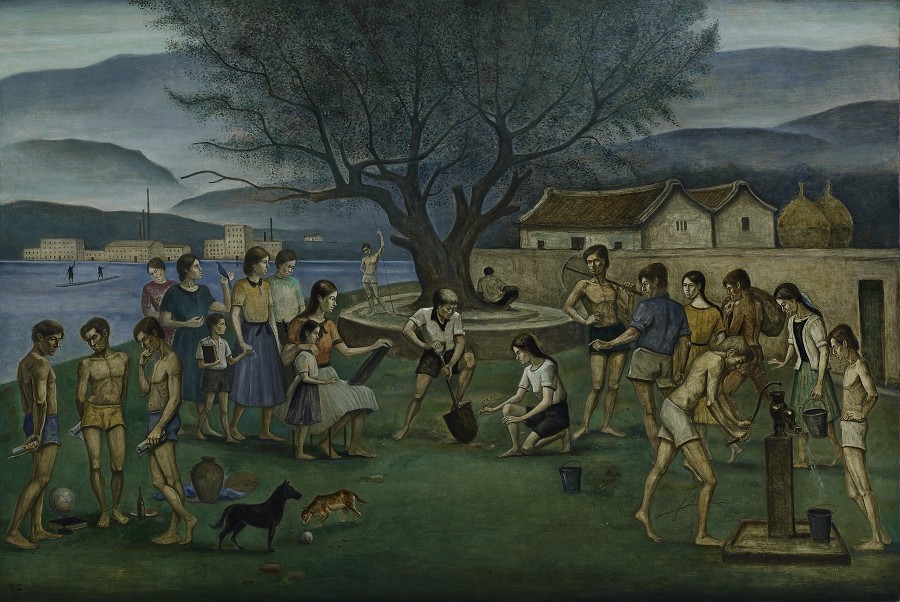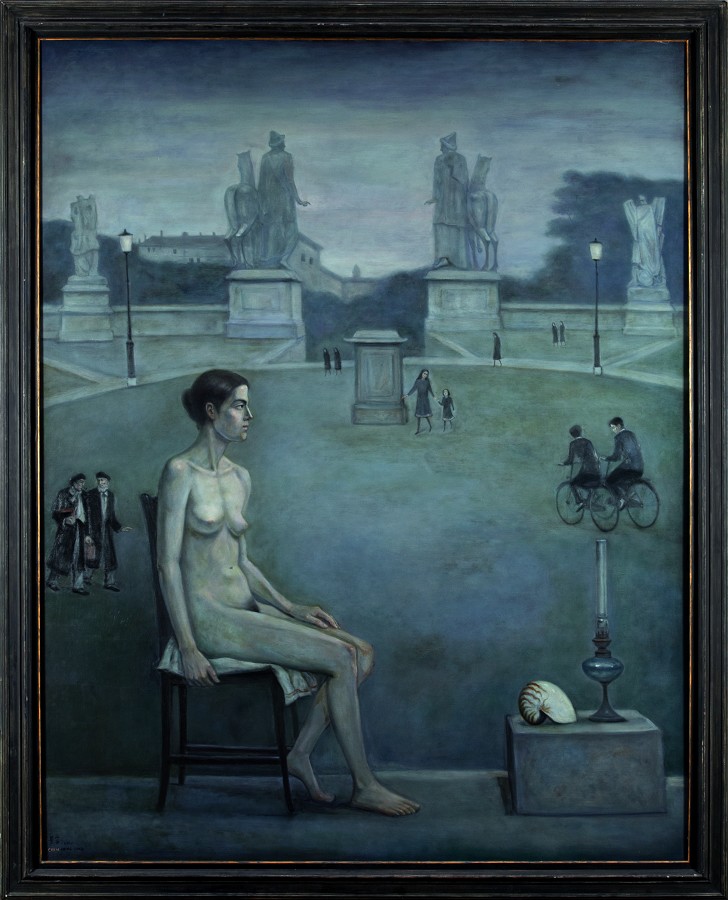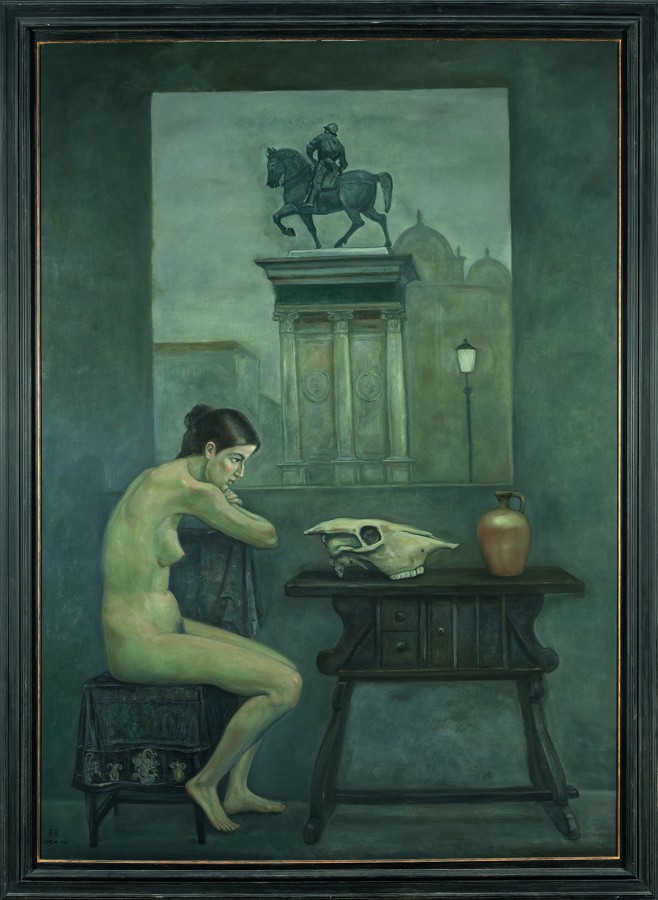
Chen Ching-Jung(1934- )
National Changhua Senior High School
College of Arts, National Taiwan Normal University
Department of Oil Painting, Musashino Art University
Mural Painting MA, Tokyo University of the Arts
AWARDS
| 1998 | Bronze Prize in Oil Painting, Le Salon des Artistes Français |
| 1999 | Silver Prize in Oil Painting, Le Salon des Artistes Français |
| 2000 | Honorable Mention Prize, Le Salon des Artistes Français |
| 2003 | Sacra Familia in Mosaic—A Gift to Pope John Paul II the Great in the Vatican |
EXHIBITIONS
| 2012 | The only Taiwanese artist invited to the Group Exhibition Da Tong International Mural Biennale, China |
| 2015 | A Commemorative Exhibition of Chen Ching-Jung at 80, Changhua County Art Museum, Changhua |
| 2019 | Invitaional Exhibition in Muzeul Ţării Crişurilor, Oradea European Music Open festival, Oradea 2019 Joint exhibition of Chen Ching-Jung and Pedro Cuni, Teh-Chun Art Gallery, Taipei |
The Carriage in Vienna
On his third trip to Europe, Chen Ching-Jung visited Wiener Stephansdom, and captured this carriage with two horses in front of the cathedral.
White horses, black carriage, the red and green from the passengers’ outfits—together they bring lively variations to this sophisticated picture.
Knight Statue in Square, at Noon, after Rain
Equestrian Statue, as seen in the painting, has existed as a genre ever since the Roman Empire. While Chen Ching-Jung painted this picture, he reflected, reconsidered, then interpreted the original sculpture he had seen. Without the statue in presence, he detached himself from the its objective reality and retracted the image in the studio. Hence the finished work discloses a surrealistic aura.
Music Flows in the Air is a fresco work and a project requested by National Concert Hall. Among all Chen Ching-Jung’s works, it took the longest to make, while also being the first fresco artwork in Taiwanese History.
Music Flows in the Air was finished in late 1987. A fresco requires an efficient and precise job before the plaster dries up, so this work depended on Chen’s intense ability to concentrate. By the time it was done, he had been working 15 hours a day, continually, for 3 months. Thus due to his marvelous persistence and effort, this masterpiece of a hands-on, accurate style was born.
While arranging the layout, Chen had deliberately studied his objects, experimented with various methods, and captured Chinese music instruments performers’ poses in sketches, as he pondered the arrangement. Ultimately Chen settle his musicians on a grassy lawn in a rhythmic arrangement, with simple mountains and mythical blue-purple skies in the background. This artwork has become the most inspirational group portrait in fresco ever since Western art became known in Taiwan.
1987
Fresco 220×940cm
It takes ten years to grow trees,
but a hundred years to rear people
In It Takes a Decade to Grow a Tree; a Century to Educate People—21 people are bringing about an ordinary, yet divine work—planting young trees. A gigantic tree stands in the middle of the scene, in contrast to the saplings being planted in the foreground; the act of planting trees is a symbol of Education for elites—and manifests the undying inheritance of art and humanities.
Additionally, by the elaborate distinction of an old man who shows his back, and a young man who faces the audience, Chen Ching-Jung creates an allegory of the past versus a bright future dawning.
The Model in the Studio
Chen Ching-Jung places the female nude(s) and still life object(s) in the foreground, while in the background is his previous large-sized oil painting work, Passers-by on the Plaza.
The combination of the realistic portrait and the imaginary background enhances a bemusing sense of weirdness—one falls into the world of imagination as one appreciates this work.
* Received the Honorable Mention Prize, Le Salon des Artistes Français, 2000
Since childhood, Chen Ching-Jung’s wife went to the doctor in Mennonite Christian Hospital. On one occasion, the hospital had a fundraising event in the North. As a donor, Mrs. Chen learned that, to convey the Agape spirit of Mennonite Christian Hospital, the hospital officials wished to have a large mosaic artwork in the Ping-An Hall. This was how Chen formed ties with the Mennonite Christian Hospital, and began to create the said mosaic work. The work itself was a gift, including the materials and working assistants.
Chen strictly followed the classical mosaic tradition during the production; he cut and mounted over 200,000 pieces of natural stones, before setting the finished work on the wall. Chen depicts Jesus as a doctor, and the image shows a scene of him healing Hualien native tribespeople.
1998
Mosaic 200×1000cm
Knight Statue with a Naked Girl
Just as Ancient Greek worshipped/admired the beauty of ideal human body—so Chen Ching-Jung felt the female body is the most beautiful thing the Creator has ever made. The woman in the picture is his long-term model, who exclusively sit-posed. Chen finished this work after 5 years of experiments, and captured the finest posture in his consideration.
The nude woman bows her head to the skeleton, with both arms holding onto the chair—they stretch intentionally, tighten her muscles, and pull her shoulder blades wider apart.
Via her existent body, the woman provokes dialogues with, and contemplation on the idea of death. Her lively, breathing beige skin is set opposite to pale white bones. There is dramatic tonal contrast between the terra-cotta water pot and the color of the skeleton—the latter is an image of death, nothingness and fear; the former of life, abundance and joy.
In the background a statue stands in the dim light of night, symbolizing one’s achievement versus one’s limited years of life. It seems like everything in the picture is suspended, at rest and enfolded with loneliness.
* Received the Silver Prize, Le Salon des Artistes Français, 1999
Madonna and Child
Chen Ching-Jung’s mosaic works are legendary, unique creative pieces which were made according to the traditional method. As they have proved themselves outstandingly done among the mosaic works in Taiwan, they are also approachable in many public or art spaces. Such as Healer of the Body and the Soul at the 2nd floor of Hualien Mennonite Hospital, Blessing from Jesus at Taitung Christian Hospital and The Crowd of Three.Jade Mountain in its gigantic scale at Changhua High School, his alma mater—these works are magnificent, alluring masterpieces.
Back when Chen participated Music Festival in Europe, he gave away this mosaic work as a gift to Muzeul Țării Crișurilor in Romania, the host of the festival. As a devout Christian and a master of portraits, Chen presents a loving Jesus in his vivid, lifelike portrayal.
In addition, hitherto Chen has been the first and only asian artist invited to Music Festival in Europe and to hold a local solo exhibition.
The Still-life and a Naked Woman by the Sea
Chen Ching-Jung is skilled in capturing the musculature and beautiful pose of female physique. This work represents those human details in a simple yet sophisticated manner. Via the diversity of postures and body types in his portrayal, the artist shows profound art. The seaside background also compliments the beauty of the models.
Ballade vom Haideknaben
This work originates/arises from The Ballade vom Haideknaben by Robert Schumann.
Little by little, Chen Ching-Jung immersed himself in and absorbed the core spirit of the musical piece. By interpreting the art of time into a dimensional, visual art form, the artist gradually pioneered his own territory of aesthetics.



